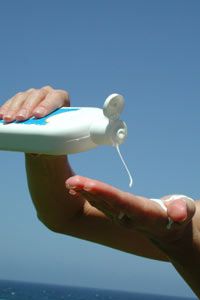For the first part of your life, you probably didn't care that much about your skin. You might remember wiggling around, anxious to get into the pool or run down the beach, while your mother attempted to smear sunscreen on your body. Sure, getting sunburned hurts, but otherwise, it didn't matter much to you. But skin changes as you get older -- just ask any adolescent whose baby-smooth, flawless exterior has been transformed by the arrival of acne. Even then, you might be worried more about how that pimple affects your chances of a date than the actual health of your skin.
Just about everything that you do to your skin during the course of your lifetime will leave some lasting impression, but the internal aging process is something that happens naturally. Wrinkles, thinning, sagging and dryness are all part of this process. As your skin ages, it doesn't replace itself as quickly. Elastin and collagen, the proteins that keep your skin strong and elastic, are produced more slowly. And you can't stop these changes from happening. Even at what age they start largely depends on your genes -- if your mother started getting wrinkles in her 30s, it's likely that you will, too.
Advertisement
External aging, however, is due to the factors we can control, like those childhood sunburns. Exposure to the sun definitely ages your skin -- and it can have even more devastating consequences beyond wrinkles, age spots and a leathery look. Smoking, your diet and repetitive facial expressions also play a part. If you furrow your brow a lot, for example, you'll probably get wrinkles on your forehead.
In this article, we'll look at all of the ways that you can prevent some of the side effects of aging skin, as well as learn how to treat different skin conditions associated with aging skin. Let's start with the basics: a skin care regimen.
Advertisement






